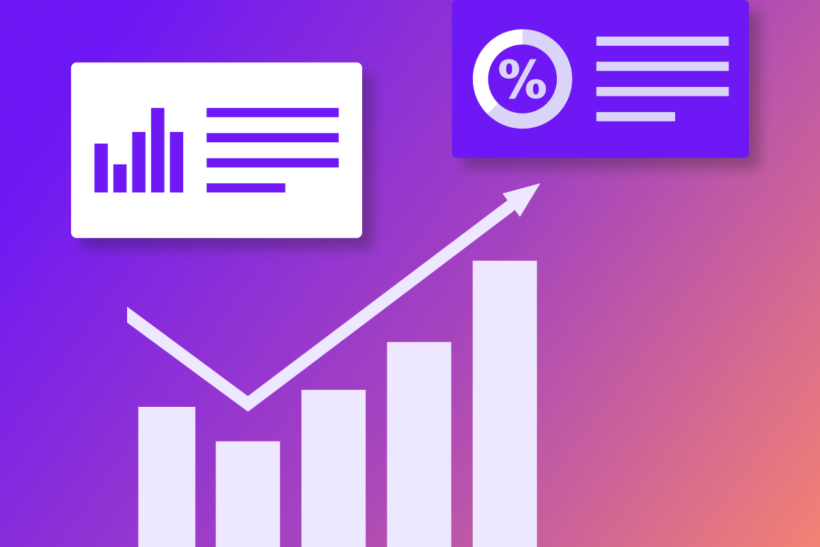
Balance Sheet Template to Model Your Company’s Financial Future
Learn more ->
Financial reporting is so much more than clunky monthly reports and analyzing what already happened. To keep up with today’s demands, businesses should be utilizing advanced financial reporting templates that help business leaders make future decisions.


Transforming an FP&A team today comes with growing pains; the function looks quite a bit different than it did 20 years ago, making it hard for current leaders to adapt to new demands and lead their teams at the same time. But with the right tools, this transition becomes a lot easier, organizations see the benefits more quickly, and businesses perform better. Leaders just need to be able to see the vision, take the leap, and invest in making it happen. It’s always worth it.
Content created by: Sasha Lamachenka, DemandGen Manager at Abacum
Every day, business leaders are asked about the overall health of their organization. They need to know how staffing challenges could impact revenue, why marketing spend doubled last month, the new revenue coming in from a product release, and so much more. At the heart of every question – no matter the business unit or even industry – is financial data. Without the critical information that is methodically tracked, reported, and communicated internally and externally by FP&A teams, business leaders wouldn’t have the data they need to be able to do their jobs.
Financial reporting, which is the main function of FP&A teams across the board, has gotten more advanced, more complex, and more actionable with time. Whether an investor is asking for clarification regarding the balance sheet, a company vice president is inquiring about pricing strategy choices, or external investors are worried about a recent loss statement, a tailored financial reporting template can create a level of transparency for your organization.
When you think of a financial report template, you may be thinking of cash flow statements, the balance sheet, or profit & loss statements, and while those are all important financial statements, financial reporting encompasses so much more. The beauty of financial tools today is that every organization can tailor their financial reporting approach to what best suits their needs; your monthly financial report use cases may vary from your competitors, but putting in the effort to optimize financial reporting will help your business succeed.
Financial reporting encompasses the data-based insights that businesses need to function. Usually led by the finance organization or FP&A teams, financial reporting helps inform company stakeholders, internal business leaders, and even board members or investors of the financial health of your company.
Without monitoring illustrative financial metrics, it’s challenging to manage expenditures, adapt to the insights from financial data, and ensure healthy cash flow.
Because financial reporting can be optimized and largely automated, your organization can get real-time insights with the click of a button. Instead of manually updating financial reports in Excel or Google Sheets, businesses today can opt for a sophisticated financial report template that is customized to their needs, automatically updated, and flawlessly linked to graphs, infographics, or other visualizations.
Excel will always have a place within FP&A operations, but as technology advances, businesses should be using a SaaS solution to get the most out of their reporting mechanisms. Excel doesn’t allow for the same level of drill-through details or automatic refreshes that today’s tools can achieve.
Financial reports provide the insights needed to make business decisions. Without numerical data to support any decision, it’s impossible to know whether that’s the right decision.
With supporting evidence, data insights, and advanced analytics, business owners and executives can lead with confidence, knowing that they are doing what’s best for the longevity of their organization.
One of the major benefits of financial reports is their versatility. One financial report template can be made into a high-level monthly financial report that all business leaders refer to as a way to better understand their business unit’s performance while another can be a financial report created specifically for the sales operations team, diving deeply into detailed revenue outcomes and sales metrics. For any financial situation in a mid-size business, the right financial report can lead to better decisions and best-case-scenario outcomes.
Gone are the days when businesses only look at their monthly financial statements and annual financial report to assess why past outcomes happened. Today, financial reporting can be used as a predictive tool that shapes the future of an organization rather than simply assessing its past.
Not all financial reports are meant to be used in every setting or targeted toward every audience. Catering your financial report template to the right stakeholders can reduce inefficiencies across the board and help direct the conversation to the right spot.
Your OPEX leader may want a report that looks at business expenses and highlights excessive expenditures in the last 6 months while a business unit leader might request a report that emphasizes the accounts payable, accounts receivable, and gross profit of their specific business unit. Giving the same report to both of these individuals won’t be as helpful as curating need-based financial reports for different situations.
When creating financial reporting templates for different audiences, it’s important to consider what information will best help the audience gather the insights they need to do their jobs.
Let’s dive into a few audience archetypes and how you can tailor financial reports to serve each specific category:
When executives and business leaders look at financial reports, they’re often searching for quick answers that can be found at a glance – don’t make them search through detailed information to get to the metrics they’re focused on. Leadership reports should highlight major KPIs that help those leaders make better business decisions and boost the organization’s performance. Focus on using visuals and summarized views to showcase the financial position of the business.
Requiring a more summarized view than executives, board members will likely ask for 4-5 KPIs that they want to stay tuned in to. Other than those KPIs, financial data may just be noise to them.
They are not usually in touch with business operations enough to understand transactional details, but they might want access to those details nonetheless. Click-through capabilities within your board member financial report template can help merge highly summarized information with detailed backups when needed.
Business unit FP&A teams or finance leaders who are used to navigating complex data sets will need to be able to see holistic financial performance for their portion of the business. It’s common to showcase high-level financial data for other business units while keeping the main focus of their financial reports centered on the business unit or division they are responsible for.
Financial reports are the most powerful when they are created with the audience in mind. By creating financial reports for different audiences, your FP&A team is empowering different areas of the business and continuing to serve as the center of business operations.
Although the main financial statements (balance sheet, cash flow statement, and profit & loss statement) are used for financial reporting, there are many other ways your organization can structure financial report templates. As mentioned above, different audiences will need varying levels of detail and report features.
Here are some of the major financial reports that every business should utilize:
Management reports are geared toward leaders throughout the organization. FP&A leaders, sales leaders, and executives can all benefit from well-built management reports. Generally, these types of reports will highlight major KPIs like net profit, cash flow, and overall expenditures within a given period. By making critical information accessible to your organization’s decision-makers, management reports are some of the most important financial report templates to prioritize.
Generally considered one of the most important indicators of business success, revenue reporting should be a priority. With the right revenue analytics, it’ll be clear which regions and business units performed well and which ones may need extra support. With today’s technology, linking sales analytics and revenue analytics is easier than ever. If you want to see how many sales came out of a certain marketing campaign and how much revenue was recognized as a result of those sales, a good revenue report can link all those factors together, painting an informative picture.
When costs get out of hand, your bottom line suffers. When your bottom line isn’t meeting expectations, investors get worried, business leaders start to get anxious, and your organization starts to face ever-increasing pressure. Reigning in costs is one of the most effective ways to recover your EBITA numbers. These financial reports generally showcase operating expenses, or the cost of goods sold (COGS), and make it easy to click into questionable line items for further investigation.
If you need to cut costs, look into updating supplier agreements, cutting back on non-time-sensitive business investments, or slowing down hiring within your organization. While cutting costs isn’t usually optimal for business growth, pulling these levers can be necessary for business survival during challenging financial times.
As more businesses choose to supplement Excel calculations with a cutting-edge financial reporting solution, they are opening the door to an entirely new set of reporting capabilities. Ad-hoc reports can be created with ease, allowing for on-the-spot analysis, scenario testing, and helpful trend insights.
Often requiring multiple data pulls, ad-hoc reports used to take days to pull together. Now, with the use of technology, even complex reports can be created in minutes.
Ad-hoc reports can be useful in many different business instances:
Ad-hoc reports aren’t always used on a regular basis, but they play an important role in making business decisions and mitigating any risks as early as possible. They’re more common today, and business leaders have grown accustomed to being able to access ad-hoc reports at a moment’s notice. The best way to be ready for these requests is to find a software solution that works well for your organization.
In recent years, the requirements placed on FP&A teams have exploded; they are no longer asked to report on what happened last month, but rather, organizations need them to predict upcoming financial data, anticipate market trends, and support investment endeavors, and report what happened during the month-end close process.
The problem is that the number of hours in the day has stayed the same. So, what are FP&A teams to do? Grow the size of their teams by 10x?
Actually, the secret is in automation. If finance departments can automate a lot of the regular financial reporting processes, they can spend more time business partnering and making data-driven decisions. With an automated financial reporting template that suits your organization’s needs, your FP&A team will step into a new era of productivity and become even more integral to your organization.
Abacum is a SaaS solution that was built for small-to-midsize businesses. It enables everything from automated reporting to on-platform approval workflows, ad-hoc analytics, predictive financial modeling, and everything in between. For many businesses around the world, Abacum has transformed the level of value their FP&A teams have overall while making each finance professional’s life a lot less stressful.
Next-generation reporting is one of the key elements of Abacum, making it the perfect platform to turn to when you need a customized financial reporting template. Great for finance teams, business leaders, and every other employee in your organization, Abacum is simple to use but very advanced in its offerings.
When using Abacum, FP&A teams love the key reporting capabilities we’ve included in the tool:
Your FP&A team can utilize our cash flow template, balance sheet template, or a wide variety of financial reporting templates to get the insights you need in the most effective way possible. When you integrate Abacum into your financial processes, you’ll get access to a long list of resources; our financial templates are at the top of that list. Each template allows for plenty of customizations while still adding value immediately. Update the data mappings to your preference, adjust the visualizations to your liking, and voila, you’ve got financial reports that can satisfy the needs of just about any audience.
Financial data is sensitive; not everyone in an organization should have access to every layer of data. With Abacum, it takes a couple of clicks to set up permissions within the tool.
For example, a certain business unit team can be granted access to transaction-level detail within their business but be restricted from accessing that same level of data for another business unit. This feature helps maintain confidentiality when needed and uphold data privacy requirements that your organization must abide by.
Making finance-related processes as efficient as possible can help your teams focus their time elsewhere and add value to the organization in new ways. Abacum’s workflow features enable in-platform approvals, automatic reporting refreshes, and seamless data validation with your source systems like ERPs, CRMs, and more.
If your FP&A organization needs to move away from spending too much time on the monthly financial report and toward showcasing actionable financial information for the key decision-makers in your organization, Abacum is the tool you’ve been looking for. Your financial position is about so much more than last year’s annual report; it’s about what’s happening this month, this week, and even today.
FP&A teams need to react more quickly, process much higher volumes of data, and enable predictive analytics, but they simply cannot succeed with Excel and PowerPoint alone; they need Abacum to make that transition successfully. Our FP&A team can help you create any financial reporting template to support your business, but that’s just the start. Let us connect all your data sources, revolutionize your finance strategy, and support the future of your FP&A organization. We can help – here’s how. Get in touch with us today.
Financial reporting needs to offer the information that your organization’s leaders need to make better decisions. In order to be successful in your financial reporting endeavors, you need reliable source data, accessible FP&A insights, and actionable takeaways that are tailored to your audience. If you can tap into automated financial reporting templates with a tool like Abacum, that’s a great place to start.
Many different financial statements can be built within Excel, but when it comes to advanced reporting and cutting-edge capabilities, its features often fall short. Excel requires manual data updates, can be very slow to refresh, and is limiting when it comes to collaboration.
Financial reports are used as a tool in financial management processes. Financial management might look like relying on a financial reporting tool to highlight a cost-related issue, making the decision to cut costs, and implementing that decision.
